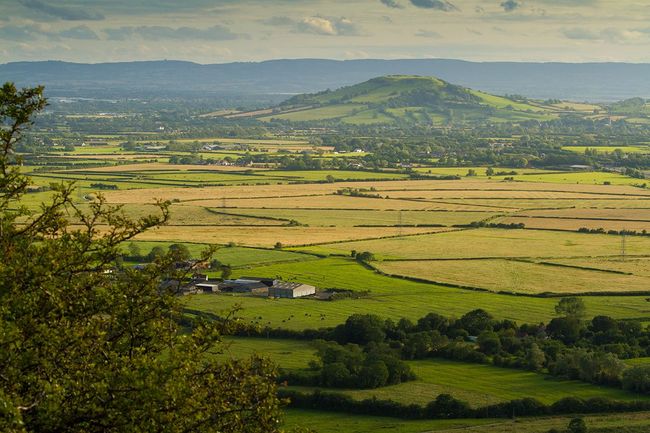About

The Mendip Society is a registered charity, no. 262867. We are a group of several hundred like-minded people who come together in the interests of conserving and enhancing the Mendip Hills. Most of our members live in and around the Hills, but some live in other parts of the country and even abroad.
Mendip and the surrounding areas are under pressure - from urbanisation and industry. Unless protected it will suffer loss of beauty, degraded natural habitats, more traffic, damage to historical features and pollution from light, noise and litter.
We:
- Organise events to encourage people to appreciate the landscape and history of Mendip. See Walks & Events page.
- Manage nature reserves where we welcome visitors including school parties. See Nature Reserve page.
- Work with other organisations, including the Mendip Hills National Landscape Service, on conservation projects and lobbying of government
- Participate in the local planning process.
- Provide small financial grants to local groups.
- Comment on relevant national issues e.g. consultations on changes to the planning process, and a deposit / return scheme for drinks bottles and cans.
- Report problems with footpaths.
- Produce a newsletter for members. See Archive page.
History
The Mendip Preservation Society was formed in 1965 with an aim ‘to keep itself informed of anything affecting the rural amenities of the Mendip area and act in any way possible to conserve these amenities’. A subscription fee was fixed at 2/6d and, by January 1966, there were over 200 members.
At the AGM in 1970, the name was changed to the Mendip Society.
The Society was the first to propose that the Mendip Hills should become an Area of Outstanding Natural Beauty (now known as a National Landscape), together with the Somerset Trust for Nature Conservation.
In 1972, their campaign was met with partial success when much of the central and western part of the area was designated.
Today, we continue to campaign for the existing National Landscape area to be extended to cover the remainder of Mendip which is of equal landscape value.
Today the Society faces many challenges particularly from inappropriate development in the form of Wind Turbines, Solar Installations and possibly Shale Gas Extraction in an area of such high landscape value.
Work continues to protect Mendip for future generations. Past Presidents of the Society have included the Bishop of Bath & Wells and Lord Rees-Mogg. The current incumbent is Les Davies, MBE.
Projects
The Mendip Way
To celebrate the 50th Anniversary the Society is undertaking the formal establishment of The Mendip Way, a 50 mile footpath covering the full length of Mendip from Brean Down in the west, to Frome in the east.
The Mendip Way has been unofficially recognised for a number of years and is cited in a number of sources. Discussions have been held with the Ordnance Survey about naming the route on their mapping and the Society is working towards this objective.
Resigning is being undertaken in both directions and some diversions and alternative routes are being incorporated, to take in places like Cheddar Gorge which was missed in the original route. A Mendip Way website is in preparation along with a new guidebook.
The route is covered by Ordnance Survey Explorer Maps 141, 143 and 153, and Landranger maps 182 and 183. Two publications provide more information - Uphill to Frome: a guide to the Mendip Way, by David Wright and West Mendip Way by Andrew Eddy, Weston Heritage Centre.
Smitham Chimney East Harptree
Lead mining has taken place on the Mendips since the Iron Age when Roman ingots from AD 49 were discovered and are now in Wells Museum. Mining took place, not only at Velvet Bottom, Charterhouse, but also at Chewton Mendip.
In 1867 a group of Cornish miners and engineers started to re-smelt the old slag heaps and set up the The East Harptree Lead Works Company. It closed in 1875 but the remains of the buildings, flumes and reservoir can still be seen. Although the buildings were demolished, the grade 2 listed 70 foot Smitham Chimney – the only one in existence in the south west- is still visible. It fell into disrepair until the early seventies when the Society, with help from many different sources, raised enough money for its renovation.
Between 2001 and 2003 the derelict site was cleared with the help of the Society’s volunteers and the AONB Warden, Les Davies. We also erected a dedicated plaque showing how the site would have looked when it was in use on a typical Mendip winters day.
Planning
Given the pressures from central government for more house building, and from commercial interests, we will never be able to stop all developments. In fact, we would not want to do so. Rather, we aim to ensure that local area plans (which set out criteria for new developments) protect the landscape; volunteers from our membership then scrutinise individual planning applications against those plans, raising objections when appropriate.
The Mendip Society supports the development of renewable energy sources, but not at a cost to the character of the countryside, its bio diversity and historic landscape. We believe great care must be taken in Areas of Outstanding Natural Beauty and along their boundaries

